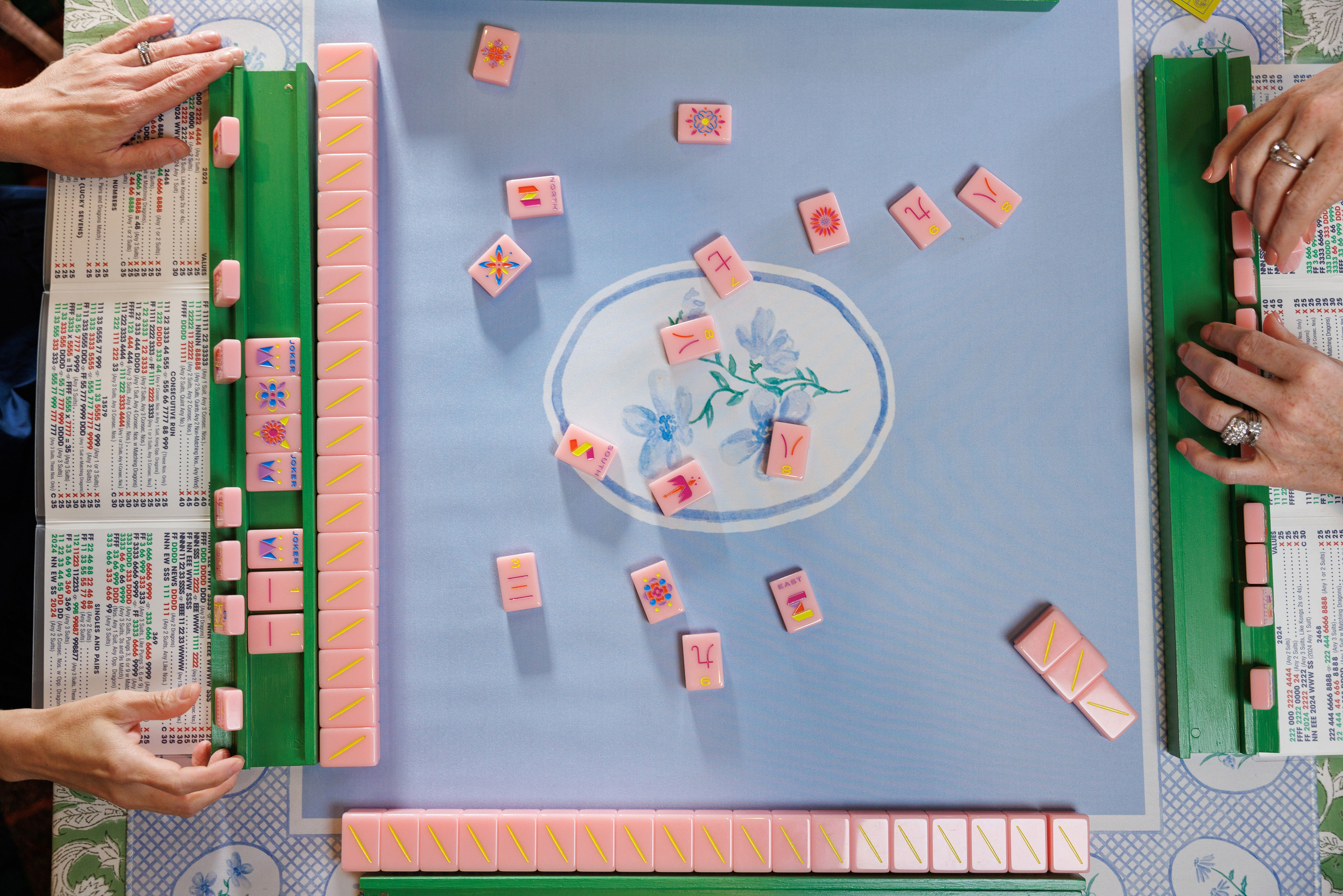
Mahjong trend spreads in the Capital Region
It’s a muggy, mid-week morning in late July when 20 women gather for a mahjong lesson at The Keeping Room. Five groups of four take seats at square tables tightly situated in the stationery shop, each topped with a chintz tablecloth, a playing mat and a tidy arrangement of 152 enameled tiles. There’s a tile tray at each seat, kind of like Scrabble, along with a printed nametag and trifold laminated card with a dizzying list of letter and number combinations. (More on that later.)
Everyone’s a beginner at today’s session. One player comments that she knew mahjong from a pivotal scene in Crazy Rich Asians, adding that she was looking for a game other than bridge to play with friends. Another says her sister is in a league in New Orleans, and that she liked the idea of playing to keep her brain sharp since her mom has dementia.
The room buzzes as the women chat. The tiles’ chunky shape and glossy sheen makes them tempting to touch. Some players pick them up for a closer look. Minutes later, a two-hour lesson begins, hosted by Mahjong Rouge founders Mauree Brooksher and Stephanie Politz.
|
|

The two friends learned to play three years ago and launched a business in May to provide lessons and leagues.
They say they’ve been surprised by the robust response. Immediately after opening, the modest side hustle morphed into multiple teaching sessions a week at retail stores, private residences and other locations.
Indeed, mahjong is having a serious moment across the country. The tile game for four was developed in China in the mid-19th century. It has been in the U.S. since the 1920s, its popularity ebbing and flowing over the last 100 years. Long a sought-after pastime for those of Asian descent, mahjong has seeped into the mainstream recently. Lessons and playing groups are popping up all over the U.S., fueled by pop culture references and the post-pandemic need for authentic social interaction.

Elsewhere in the Capital Region, meetups have emerged at venues like the West Feliciana Parish Library and The Royal Standard.
The game has also become fashionable. In May, House Beautiful called mahjong rooms “the design world’s latest obsession.” And higher end merch retailers like The Mahjong Line, which Brooksher and Politz represent, sell trendy game sets priced from $375-$450.
Brooksher, formerly a teacher and stroller fitness entrepreneur, dives into today’s instruction, carefully describing the tiles’ suits and functions. She asks the group to repeat the new vocabulary—words like crack, bam and dot—to help absorb it. Once the rudiments are out of the way, the object of the game is revealed: to create a winning hand of matching or sequential tiles, similar to rummy or poker. Players draw and discard tiles throughout the game, strategizing with each turn how to reach a “mahjong” with the required 14.
There are intricacies that make mahjong more challenging than other games. That includes what defines a winning hand in the first place, which changes annually. The list of possible winning hands is issued each year by the National Mah Jongg League in New Jersey on the trifold cards that Brooksher and Politz have placed at each player’s seat. The game becomes easier the more you play, says Politz, a former lawyer.
“You start with all these tiles, and it can seem overwhelming, but then you’re creating something,” she says. “I love the feeling that you’re imposing order over chaos.”

Once the training wheels come off, beginners can advance to Mahjong Rouge’s intermediate lessons as well as league play that convenes friends and strangers for regular competitions.
“We did this because we wanted to provide an opportunity for social connection,” Brooksher says. “I think it’s filling a void for an inner longing for community.” Find Mahjong Rouge on Instagram at @mahjong_rouge
This article was originally published in the September 2024 issue of 225 Magazine.
|
|
|

